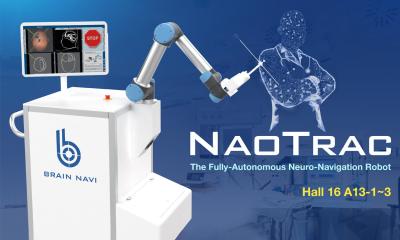News • Multi-component procedure
SULEEI: extending the functional lives of biological heart valve prostheses
For decades now, the Fraunhofer Institute for Organic Electronics, Electron Beam and Plasma Technology FEP has been developing processes and systems for cleaning, sterilization, and surface modification. The newly in-house developed process, called SULEEI, makes it possible to sterilize (S) and preserve decellularized pericardial tissue by means of photo-initiated ultraviolet (U) crosslinking with low-energy electron irradiation (LEEI).

Around the world, approximately 300,000 heart valve operations are performed every year. Some 30,000 people receive a new heart valve implant every year in Germany alone. Over the course of a human lifespan, each of these valves undergoes around 2.6 billion cycles of opening and closing. Valve-related diseases are primarily caused by degenerative changes; the aortic valve is particularly vulnerable. Calcifications and inflammatory processes affect the performance of heart valves and may cause high grade stenosis which finally results in a weakened heart muscle. Initially, the heart muscle is able to compensate this higher resistance by an abnormal thickening of the heart muscle. Because of this cardiac hypertrophy the heart becomes less elastic followed by impaired heart function and diminished cardiac output of oxygen-rich blood into the body's entire circulation. As a consequence, the patient develops a heart failure and suffers by symptoms as abnormal fatigue, breathing difficulties, disability, chest pain and even acute unconsciousness. Both, the early diagnosis and a timely therapy may prevent serious harm and above all the patient’s death.
The only treatment option available for high-grade stenosis is replacing the heart valve by cardiac surgery. There is no drug-based therapy for resolving valve changes as yet. Replacing a heart valve instantly reduces the level of resistance affecting it, leading to a rapid improvement in both heart function and the patient’s symptoms. As a result, the patient can ultimately return to a normal quality of life and life expectancy.
The primary options available when selecting a replacement heart valve are a mechanical (synthetic) one or a biological one. The patient’s age, plus factors including life expectancy, lifestyle, and any secondary illnesses, all have to be taken into account when selecting a prosthesis.
The process of manufacturing mechanical prostheses is based on inert composite materials using titanium. The main advantages associated with this type of implant are its longevity and lack of substantial wear and tear, meaning that the patient normally does not have to undergo more than one operation. As blood clots can be formed onto the valve contact surfaces, however, patients are required to take blood-thinning medication throughout the remainder of their lives, putting them at increased risk of hemorrhage.
In recent years, biological prostheses have become an increasingly popular alternative. Primarily made from bovine pericardial tissue (referring to the sac surrounding the heart) or porcine heart valves, what makes them especially appealing is the fact that they are not composed of thrombogenic materials, so there is no need for the patient to be put on a permanent course of blood-thinning medication. However, biological prostheses suffer from a shorter functional life: After 10 to 15 years, 30 to 40% of all patients experience a similar level of degenerative change as they would have with the native valve showing an equivalent level of stenosis. As a consequence, the patient ends up reporting the same symptoms as they had before the operation and another valve replacement procedure is required.
The reasons behind these prostheses degenerating are believed to lie in the manufacturing process. Working in cooperation with the Cardiac Surgery Department, the Medical and Biotechnological Applications business unit at Fraunhofer FEP has developed a new treatment procedure known as SULEEI: sterilization (S) and preservation of decellularized pericardial tissue via photo-initiated ultraviolet (U) crosslinking with low-energy electron irradiation (LEEI). Researchers at the Heart Center Dresden (part of the Faculty of Medicine CGC at the university) are exploring the pathogenesis of aortic valve stenosis, which in most cases is accompanied by a form of tissue calcification known as sclerosis.
Simona Walker, a PhD student at Fraunhofer FEP, explains the innovation: “The SULEEI procedure is a unique combination of two mechanisms. It is a multi-component procedure that starts by crosslinking the decellularized biological tissue using a vitamin B2 assisted UV treatment. The hereby achieved effect can be enhanced by the subsequent applied treatment, which involves low-energy electrons. These electrons produce numerous effects. The aim is to achieve a similar crosslinking degree in comparison to the conventional glutaraldehyde treatment. In conclusion, through the use of non-toxic substances the biocompatibility is increase. Applying the SULEEI process eliminates the need for any subsequent sterilization.”
Prof. Dr. Sems-Malte Tugtekin, who leads the Cardiac Surgery Department at the Heart Center Dresden, briefly outlines the development: “This cooperation with Fraunhofer FEP is enabling us to improve the stability of biological aortic valve prostheses through a concept that is a significant step forward for us and patients alike.”
Dr. Ulla König, Deputy Manager of the Medical and Biotechnological Applications Division at Fraunhofer FEP, goes on to express the sentiments of both partners: “Applying this innovative SULEEI procedure when preparing tissue for biological heart valves will open up the possibility of developing new biological prostheses with a level of durability that has not been possible to attain before now.”
The initial findings will be presented as part of the Future Hospital showcase, and at the Fraunhofer FEP stand, at the XPOMET Festival taking place in Berlin on October 10–12, 2019.
Source: The Fraunhofer Institute for Organic Electronics, Electron Beam and Plasma Technology FEP
27.09.2019











